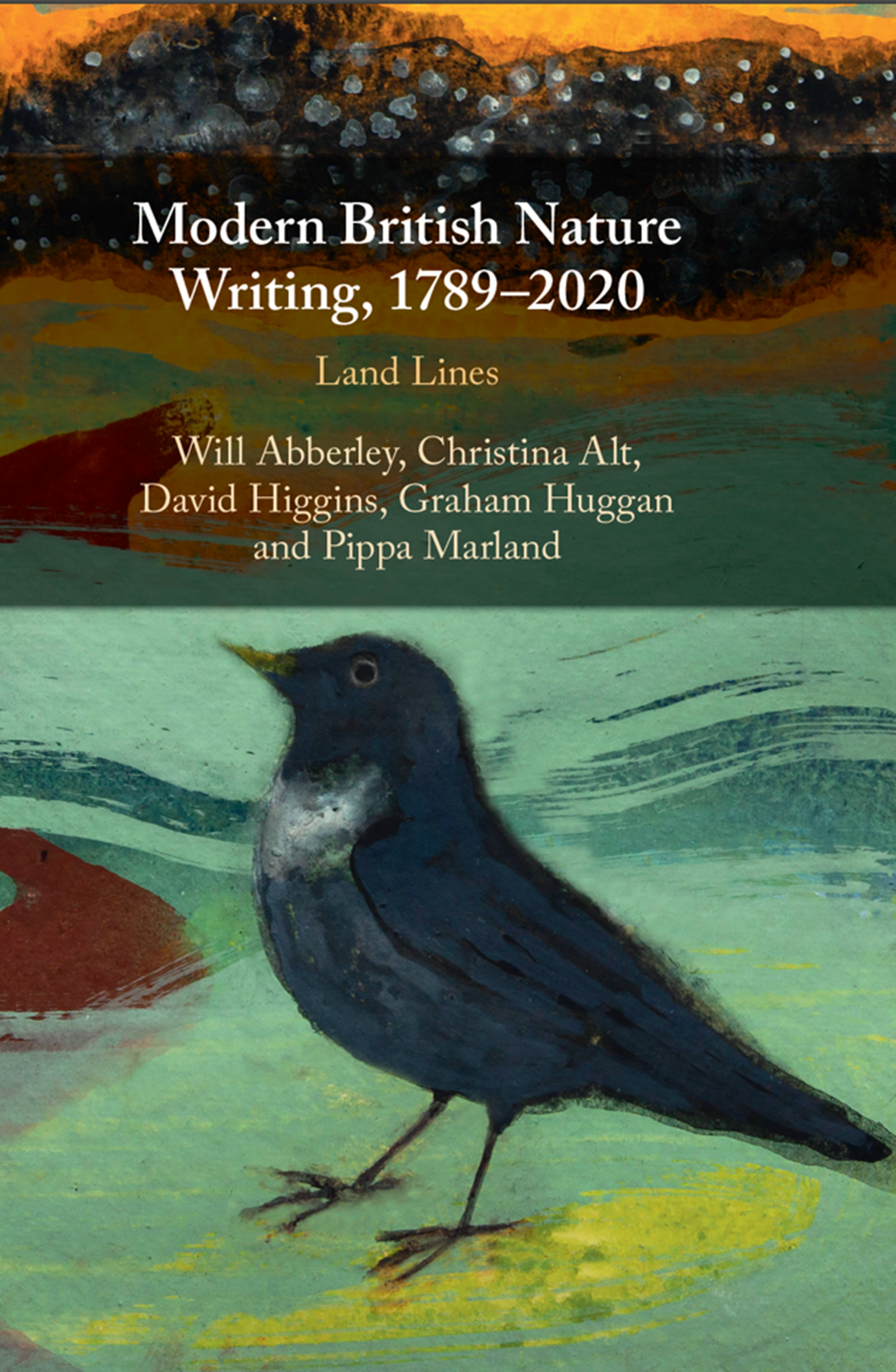The team behind the AHRC-funded Land Lines nature writing project, and its two successful public engagement follow-on projects (Tracks, Traces, Trails: Nature Writing Beyond the Page and Tipping Points: Cultural Responses to Land Sharing in the North) are delighted to announce the release of their book, Land Lines: Modern British Nature Writing, 1789–2020 on the 17th March 2022 with Cambridge University Press.
In this new volume, authors Dr Will Abberley, Dr Christina Alt, Prof David Higgins, Prof Graham Huggan and Dr Pippa Marland move through multiple genealogies and histories of British nature writing, from the Romantics to the contemporary period. Across the four core chapters, this book responds to the many criticisms, controversies, and tropes of British nature writing, and seeks to understand our contemporary fascination with this historically significant genre of literature. Drawing on texts from Gilbert White’s monumental A Natural History of Selborne to the writing of contemporary authors such as Elizabeth-Jane Burnett, Modern British Nature Writing grapples with some of the most enchanting and complex aspects of British representations of nature in literature.

The cover image of the book, titled ‘Pondering Ring Ouzel – inspired by Gilbert White’s Letter 26, 1769 (2021), is by artist Melanie Rose, an artist member of the Land Lines: Tipping Points team and a recent PhD graduate from the University of Leeds.
Abstract from Cambridge University Press
Why do we speak so much of nature today when there is so little of it left? Prompted by this question, this study offers the first full-length exploration of modern British nature writing, from the late eighteenth century to the present. Focusing on non-fictional prose writing, the book supplies new readings of classic texts by Romantic, Victorian and Contemporary authors, situating these within the context of an enduringly popular genre. Nature writing is still widely considered fundamentally celebratory or escapist, yet it is also very much in tune with the conflicts of a natural world under threat. The book’s five authors connect these conflicts to the triple historical crisis of the environment; of representation; and of modern dissociated sensibility. This book offers an informed critical approach to modern British nature writing for specialist readers, as well as a valuable guide for general readers concerned by an increasingly diminished natural world.
Endorsements
‘A thought-provoking, sensitive, and rigorous survey of nature writing old and new, placing the genre in its historical, social, cultural, and above all contemporary contexts. Hugely relevant to anyone who cares about how we write about and respond to the natural world, in the Age of the Anthropocene.’
Stephen Moss, Bath Spa University
‘This is an exhilarating book that dispels clichés, using detailed enquiry to ask essential, tough questions about how environmental writing challenges barriers associated with gender, class, and species.’
Susan Oliver, University of Essex
‘The best nature writers discern relationships between observed and observer, human and “nature”. This terrific study shows writers delighting in and responding to each other through their common goals in a changing world. A thoroughly authoritative survey, Modern British Nature Writing, 1789–2020 questions and situates both particular writers and the genre itself.’
Ralph Pite, University of Bristol
Learn more about the Land Lines project here:
www.landlinesproject.wordpress.com

